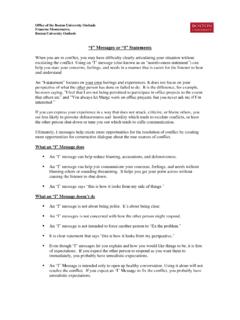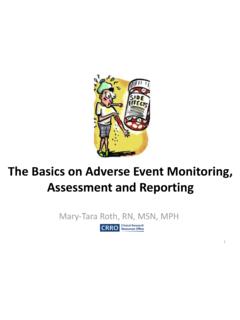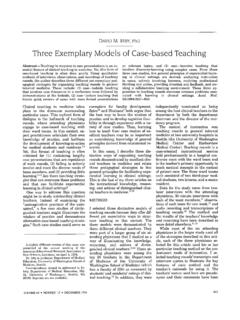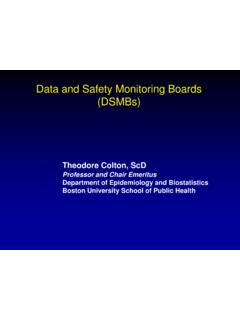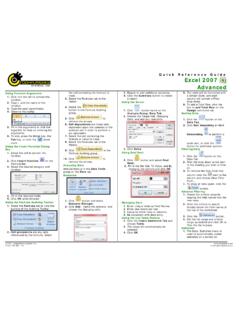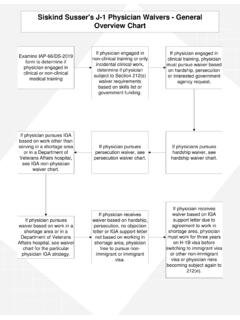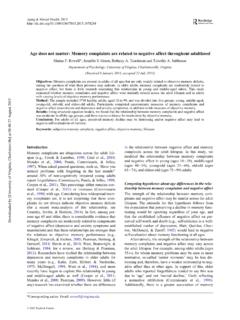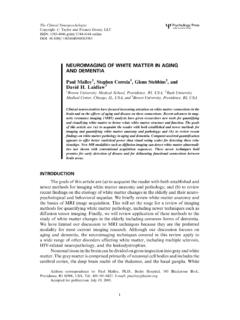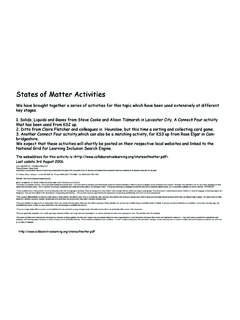Transcription of A 60-Year-Old Woman With Mild Memory Impairment
1 CLINICIAN S CORNERCLINICAL CROSSROADSCONFERENCES with PATIENTS AND DOCTORSA 60-Year-Old WomanWith mild Memory ImpairmentReview of mild Cognitive ImpairmentJames M. Ellison, MD, MPH, DiscussantDRLIBMAN:Ms E, a 60-Year-Old divorced Woman living in-dependently in active semiretirement, described her cogni-tive health as good until the summer of 2005. At that time,she and her children noticed her difficulty recalling whereshe placed objects, her forgetfulness about recent conver-sations, and her growing reliance on written reminders.
2 Aspart of an evaluation by her primary care physician, a mag-netic resonance image (MRI) was obtained and revealed bi-lateral subcortical and periventricular discrete and conflu-ent T2-enhancing white matter lesions with no significantcortical atrophy (FIGUREand interactive eFigure, availableat ). She was treated with paroxetine,30 mg/d, to address concurrent symptoms of depression andanxiety, and she was referred for further neurocognitive as-sessment. Her only other medication was low-dose had no prior history of hypertension, diabetes melli-tus, head trauma, or psychiatric illnesses.
3 A history of tickbites was elicited, and she had been smoking 1 pack of ciga-rettes per day for 30 years. She denied abuse of alcohol, il-licit drugs, or prescription medications. Her family historywas negative for dementia. Physical examination showed ablood pressure of 118/70 mm Hg and a regular pulse of 60/min, and was noteworthy only for brisk symmetric reflexesand a right-sided upgoing great mental status ex-amination showed a depressed and anxious mood. Atten-tion and naming were intact. On a brief test of Memory , sherecalled only 1 of 4 words after a delay but recognized theother 3.
4 She had some difficulty drawing a clock complete blood cell count, erythrocyte sedimentationrate, glucose, electrolytes, thyrotropin, and vitamin B12lev-els were normal, and her Lyme disease and syphilis sero-logic studies were nonreactive. Her serum cholesterol wasmildly increased at 207 mg/dL ( mmol/L) with a low-density lipoprotein component of 120 mg/dL ( mmol/L).Lumbar puncture showed no abnormalities. Antinuclear an-tibody was present at 1:40 dilution with a speckled pat-tern. Apolipoprotein E (ApoE) genotype revealed the pres-ence of a heterozygous state,e3 year later, Ms E returned to her neurologist con-cerned that her Memory Impairment had worsened.
5 In ad-See also Patient available online at questions on p conference took place atthe Psychiatry Grand Rounds at Brigham and Wom-en s Hospital, Boston, Massachusetts, on April 13, Affiliations:Dr Ellison is Associate Professor of Psychiatry, Harvard Medi-cal School; Clinical Director, Geriatric Psychiatry Program, and Director, MemoryDiagnostic Clinic, McLean Hospital, Belmont, Author:James M. Ellison, MD, MPH, McLean Hospital, SB 322,115 Mill St, Belmont, MA 02478 Crossroads at Beth Israel Deaconess Medical Centeris produced and ed-ited by Tom Delbanco, MD, Howard Libman, MD, Eileen E.
6 Reynolds, MD, AmyN. Ship, MD, and Anjala V. Tess, MD. Risa B. Burns, MD, is series Crossroads Section Editor:Margaret A. Winker, MD, Deputy older individuals experience or demonstrate cog-nitive Impairment that is significantly abnormal for theirage and education yet beneath the threshold for a diag-nosis of dementia. This mild cognitive Impairment causesminimal functional Impairment and is often overlookedin clinical settings, yet affected individuals are at height-ened risk for a range of adverse outcomes including con-version to dementia.
7 The case of Ms E, a 60-year-oldwoman with mild Memory Impairment and white mat-ter lesions on magnetic resonance imaging, providesan opportunity to consider the questions that face pa-tient, family, and clinicians when mild cognitive symp-toms prompt a search for diagnosis and managementoptions. Discussion of her case reviews mild cognitiveimpairment with emphasis on an evidence-based ap-proach to evaluation and treatment, including manage-ment of comorbid medical conditions, lifestyle changes,and 2008;300(13) ,October 1, 2008 Vol 300, No.
8 13(Reprinted) 2008 American Medical Association. All rights reserved. at Boston University on January 14, from dition to forgetfulness, she newly reported increased diffi-culty balancing her checkbook. She described emotionaldistress despite continuation of paroxetine. Her delayed re-call appeared more impaired, with spontaneous recall of 0of 4 words after a brief delay, recognition of only 2, and gen-eration of 2 false positives. A formal test of Memory , the Cali-fornia Verbal Learning Test, showed impaired learning ofnew words, impaired delayed recall, and a number of falsepositives among the words she recognized.
9 Her clock draw-ing appeared more impaired, and she showed executive func-tion deficits in her Trails B performance. Verbal fluency wasbelow expectation, with phonemic dysfunction greater thansemantic dysfunction. A single-photon emission com-puted tomographic scan showed no focal or regional cor-tical perfusion abnormalities. On the 30-item Geriatric De-pression Scale she scored 12 points, which is consistent withmild depression. She was given a diagnosis of early Alzhei-mer disease (AD). She continued paroxetine, 30 mg/d, andbegan taking donepezil, which was titrated up to 10 E: HER VIEWI have always been in good health, and I ve prided myselfwith my health.
10 I walk 3 to 5 miles a day, and I ve done sofor years. It was in 2005 that I first noticed I was remember thinking, This is not right. TherewerethingsthatIcouldn tremember,andthenIwouldpanicbecausethat did for the day and started keeping a journal, which I was at the time in some sort of denial. I had had a viralinfection, and I thought it might be the aftereffect of had sold real estate, and then I decided to just chill alittle bit and work in a garden center. I have loved it. Lastsummer, a couple times I would forget where I left my gar-den gloves or my scissors, or some plants, within the nurs-ery.

